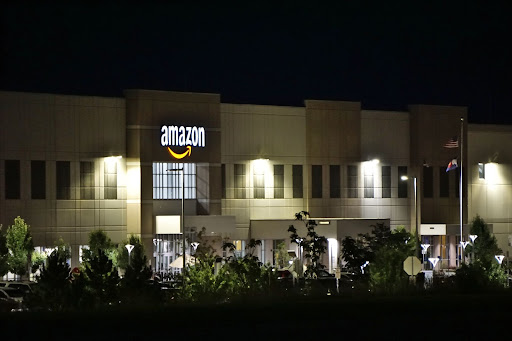As the world continues to grapple with the effects of the COVID-19 pandemic, companies are facing tough decisions regarding their employees’ return to the office. One such company, Amazon, has been at the center of a heated debate over its return-to-office policy. This article delves into the controversy surrounding Amazon’s ultimatum to its workers, exploring the viewpoints of both the company and its employees.
The Shift in Amazon’s Policy
In February of this year, Amazon announced a new policy that required its corporate employees to be in the office three days a week. This marked a significant shift from the company’s previous approach, which allowed leaders to determine their teams’ work arrangements. The decision was based on observations made during the pandemic and conversations with leaders at other companies.
Disagree and Commit: A Leadership Principle
During a pre-recorded internal Q&A session, Amazon CEO Andy Jassy addressed the resistance from employees regarding the return-to-office policy. He invoked one of Amazon’s leadership principles, stating that it was “past the time to disagree and commit.” Jassy emphasized the importance of unity within the organization, highlighting that it was not fair for some employees to be in the office while others refused to do so.
The Employee Pushback
Despite the company’s rationale, many Amazon workers have expressed their opposition to the new policy. In May, hundreds of employees staged a lunchtime demonstration at the company’s Seattle headquarters, protesting against the three-day office attendance mandate. An internal Slack channel advocating for remote work garnered a staggering 33,000 members, reflecting the significant discontent among employees.
The Demand for Data
Some employees have called for the company to provide data supporting Jassy’s claims about the benefits of in-person collaboration. During the Q&A session, Jassy revealed that Amazon’s leadership had analyzed the data available and found that meetings were not as effective when conducted remotely. However, some employees remain skeptical and are demanding more concrete evidence to substantiate these claims.
Amazon’s Response
Amazon has maintained that the previous policy, which allowed flexible work arrangements, was not meant to be the norm. The company rejects the notion that remote work is the optimal solution and believes that in-person collaboration fosters greater engagement among employees. In a blog post from 2021, Jassy stated that Amazon would continue to adjust its policies based on new information and evolving circumstances.
Relocation of Workers in Smaller Offices
In addition to the return-to-office policy, Amazon has implemented another change that has raised concerns among its employees. According to multiple media reports, the company rolled out a policy requiring some workers in smaller offices to relocate to main offices in larger cities. This move has further fueled discontent and added to the ongoing debate surrounding Amazon’s treatment of its workforce.
The Larger Picture
Amazon, a global company with 1.4 million employees worldwide, employs workers in various settings, including offices, warehouses, and other facilities. While the focus of this article has been on its corporate employees, it is important to note that the return-to-office policy does not apply universally across the company. The debate surrounding Amazon’s approach to remote work highlights a broader discussion about the future of work in a post-pandemic world.
Conclusion
The debate over Amazon’s return-to-office policy has highlighted the tension between employees’ desire for flexibility and the company’s emphasis on in-person collaboration. While Amazon’s leadership believes that being physically present in the office fosters better engagement and teamwork, many workers remain unconvinced. As the world continues to navigate the challenges brought about by the pandemic, companies like Amazon must carefully consider the needs and preferences of their employees while striving to maintain productivity and innovation.
FAQ
1. What is Amazon’s return-to-office policy?
Amazon’s return-to-office policy, announced in February, requires corporate employees to be in the office three days a week. This marks a departure from the company’s previous flexible work arrangements.
2. Why are Amazon employees opposing the return-to-office policy?
Many Amazon employees oppose the return-to-office policy due to a desire for continued remote work flexibility. They argue that remote work can be just as productive and that the company should provide more data to support the benefits of in-person collaboration.
3. How has Amazon responded to the pushback from its employees?
Amazon’s CEO, Andy Jassy, has urged employees to “disagree and commit” to the return-to-office policy. The company maintains that in-person collaboration leads to greater engagement and productivity. However, Amazon has also stated that it will continue to evaluate its policies based on new information and feedback.
4. Are all Amazon employees affected by the return-to-office policy?
No, the return-to-office policy primarily applies to Amazon’s corporate employees. The company has a diverse workforce, including employees in warehouses and other facilities, who may have different work arrangements.
5. What other changes has Amazon made regarding its workforce?
In addition to the return-to-office policy, Amazon has implemented a policy that requires some workers in smaller offices to relocate to larger offices in bigger cities. This change has raised concerns among employees and added to the ongoing debate surrounding Amazon’s treatment of its workforce.







